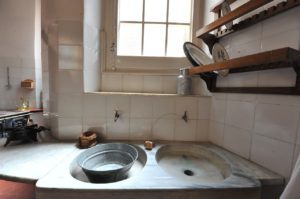Uno, Dos, Tres: Spanish Numbers
In this post you’ll learn Spanish numbers and how to use them. So you’ll learn how to count in Spanish, and then you’ll see how to use Spanish numbers in practical situations. First, we’ll look at the basic Spanish numbers from one to ten. Then we’ll see higher numbers. Finally we’ll see some examples of using numbers in conversation, for talking about prices, giving addresses and phone numbers, and more.
How to count in Spanish from 0-10
Let’s start with the Spanish numbers from cero zero through diez ten.
- cero zero
- uno one
- dos two
- tres three
- cuatro four
- cinco five
- seis six
- siete seven
- ocho eight
- nueve nine
- diez ten
How to count in Spanish from 11-19
Now let’s look at higher Spanish numbers. Notice that eleven though fifteen end in –ce, and the ones place numbers are slightly changed. For sixteen through nineteen, start with dieci, which is diez y (ten and).
- once eleven
- doce twelve
- trece thirteen
- catorce fourteen
- quince fifteen
- dieciséis sixteen
- diecisiete seventeen
- dieciocho eighteen
- diecinueve nineteen
How to count in Spanish from 20-99
Next, let’s move on to Spanish numbers above 19. Here are the tens. To form numbers between the tens, add i (y) plus the ones place.
- 20 veinte
- 21 veintiuno
- 22 veintidós
- 23 veintitrés
- 24 veinticuatro
- 25 veinticinco
- 30 treinta
- 40 cuarenta
- 50 cincuenta
- 60 sesenta
- 70 setenta
- 80 ochenta
- 90 noventa
Higher Spanish Numbers
And here are higher Spanish numbers from 100 on.
- 100 cien
- 101 ciento uno
- 200 doscientos
- 300 trescientos
- 450 cuatrocientos cincuenta
- 1,000 mil
- 2,000 dos mil
- 100,000 cien mil
- 1,000,000 un millón
Using Numbers
Let’s see some typical examples of how you might use Spanish numbers.
- Dos vasos de agua, por favor.
Two glasses of water, please. - Mesa para dos/tres/cuatro/cinco personas, por favor.
A table for two/three/four/five people, please. - ¿Qué hora es?
What time is it? - Son las siete en punto de la tarde. / Son las once en punto de la mañana.
It’s seven o’clock in the evening / eleven o’clock in the morning. - Es la una en punto de la tarde / de la mañana.
It’s one o’clock in the afternoon / in the morning. - Es la habitación número treinta y siete en el tercer piso.
It’s room number thirty seven, on the third floor. - ¿Cuántos años tienes? (tú)
¿Cuántos años tiene? (usted)
How old are you? - Tengo veinte / treinta y cinco / cincuenta años.
I’m twenty/ thirty five/ fifty years old. - ¿Cuánto cuesta?
How much does it cost? - Cuesta doscientos seis pesos mexicanos.
It costs $MX206. - ¿Cuántas hermanas tienes? (tú)
¿Cuántas hermanas tiene? (usted)
How many sisters do you have? - Tengo dos hermanas.
I have two sisters. - ¿Cuál es tu número de teléfono? (tú)
¿Cuál es su número de teléfono? (usted)
What is your phone number? - Mi número de teléfono es el 52-55-85-26-50-52 (cincuenta y dos, cincuenta y cinco, ochenta y cinco, veintiséis, cincuenta, cincuenta y dos).
My phone number is 52-55-85-26-50-52. - ¿Dónde está el hotel?
Where is the hotel? - El hotel está en el número 25 de la avenida 16 de Septiembre.
The hotel is at 25 Avenida 16 de Septiembre.
Learn Spanish with the Language Garage!
We hope you’ve enjoyed learning how to count in Spanish, and how to use Spanish numbers. If you’re interested in learning more, check out our other posts on Spanish language, culture, and more. If you’re looking for convenient and affordable live Spanish lessons with a real teacher, visit The Language Garage. Our lessons are affordable and fun, and they’re given online in a virtual classroom, so it doesn’t matter where you live or work – we can come to you. We have flexible options, with a free trial so that you can decide if there’s a fit. Check us out!
Photo by karol rosales on Unsplash






